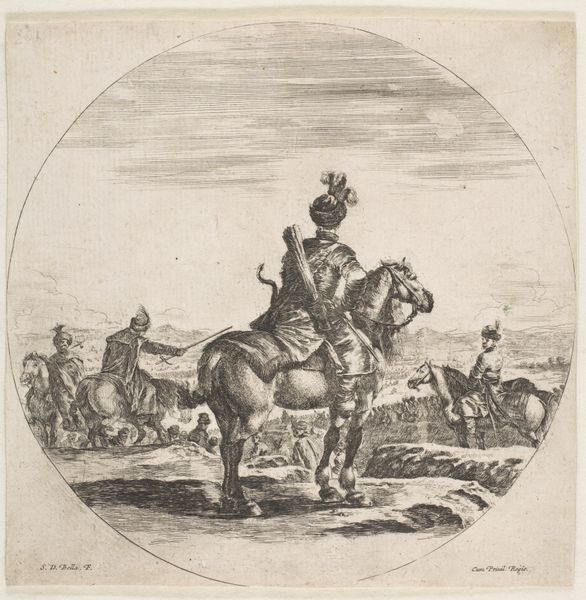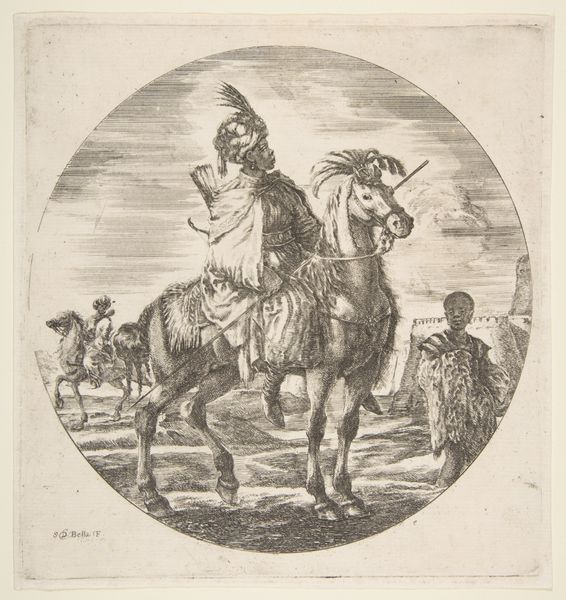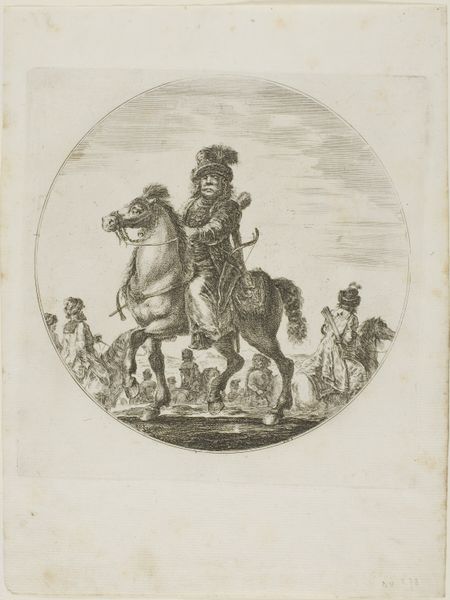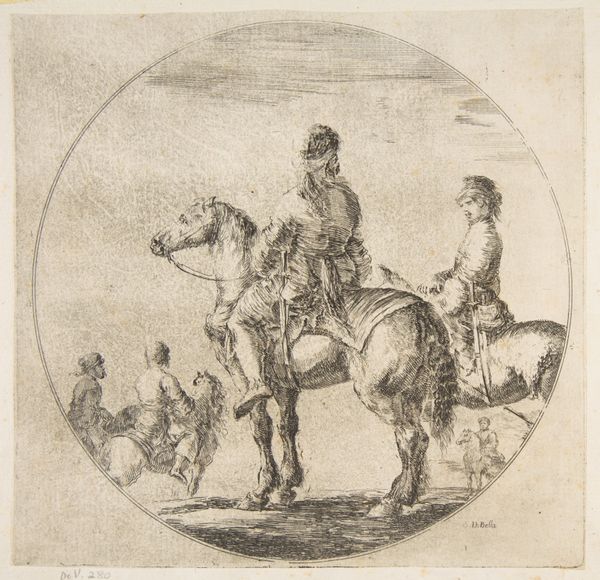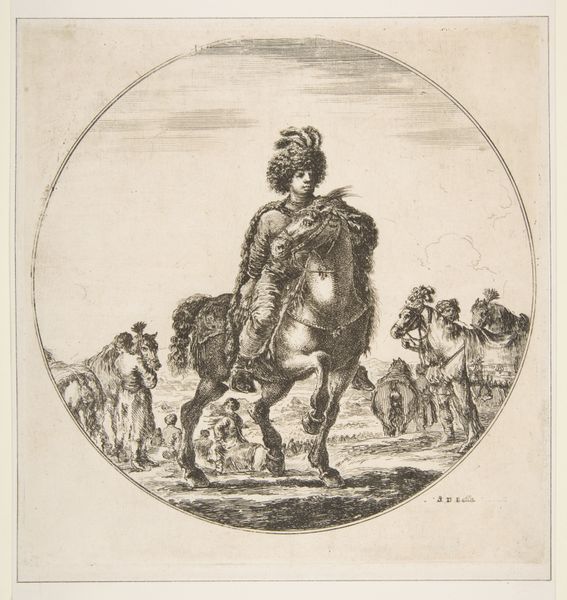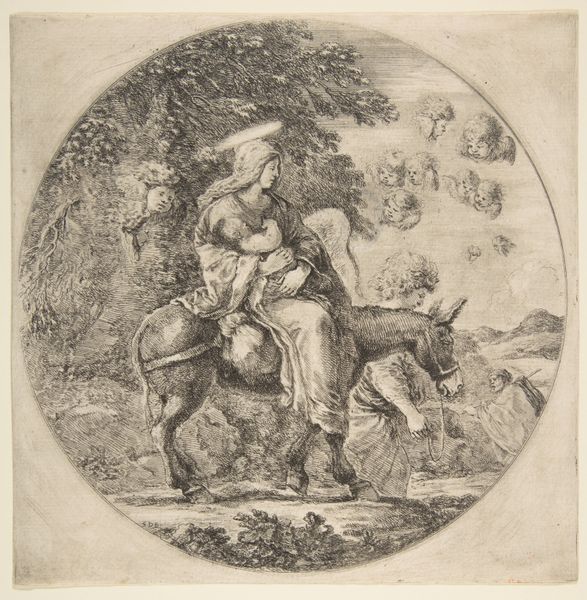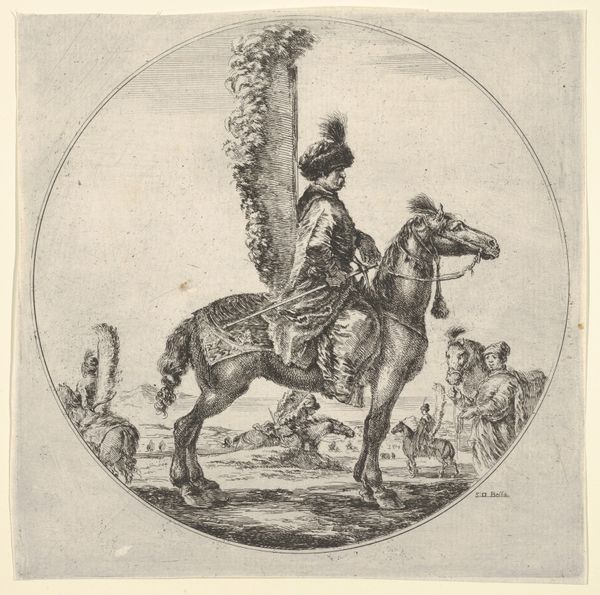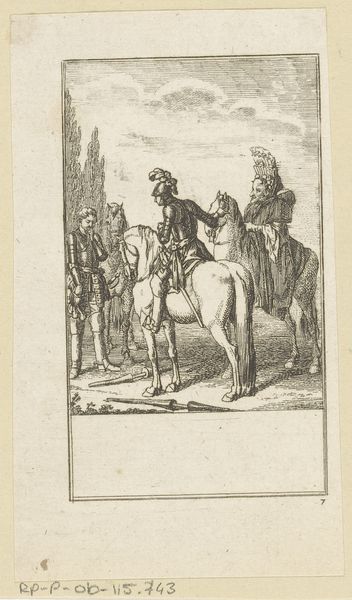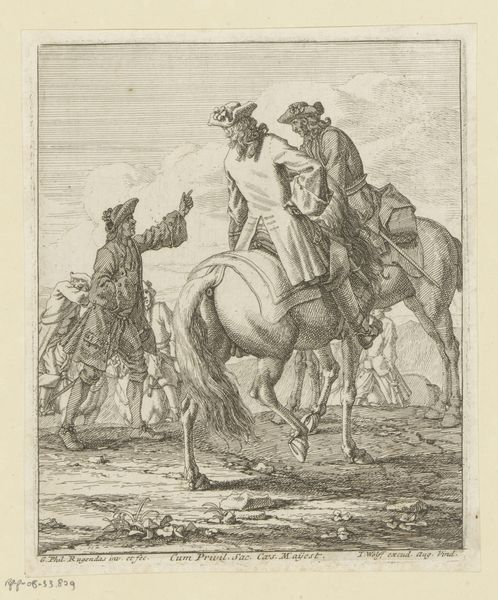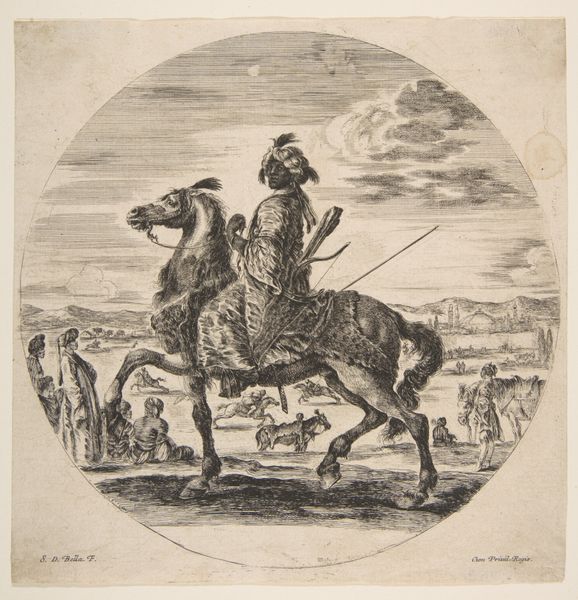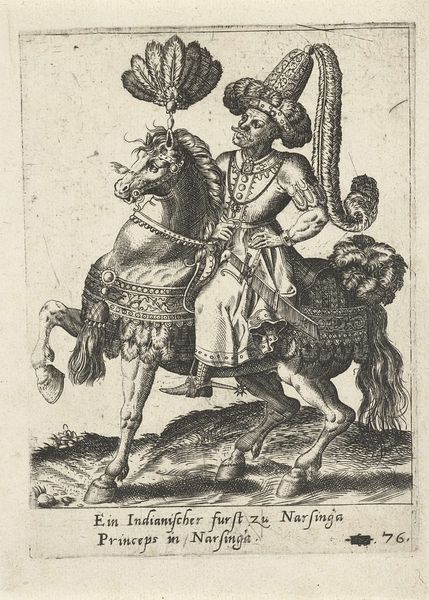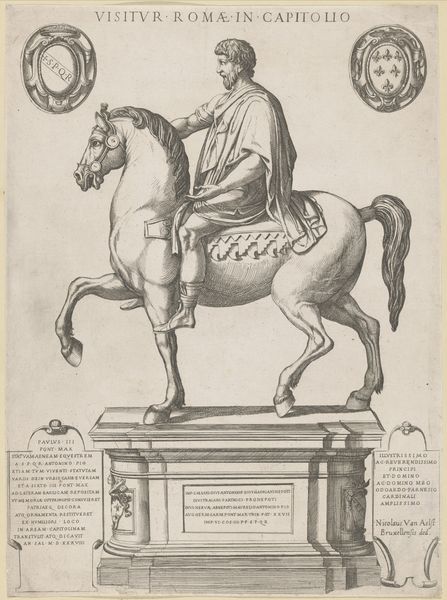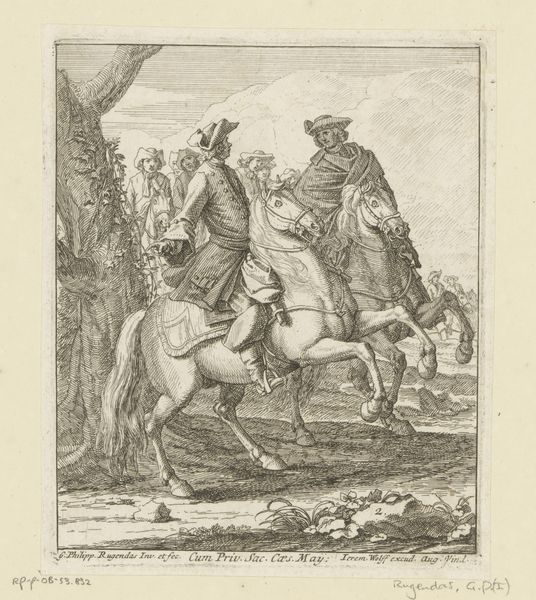
drawing, print, etching
#
drawing
#
baroque
# print
#
etching
#
landscape
#
figuration
#
horse
#
men
#
genre-painting
Dimensions: Plate: 7 3/8 × 7 3/16 in. (18.8 × 18.2 cm) Sheet: 7 7/8 × 7 5/8 in. (20 × 19.4 cm)
Copyright: Public Domain
Stefano della Bella created "A Hungarian Cavalier," an engraving on paper, in the 17th century. The circular composition immediately draws the eye to the stark contrast of light and shadow, defining the figure of the cavalier on horseback. The artist employs line and form to delineate the subject's social status. The cavalier, positioned with his back to us, invites speculation. The circular frame isolates the central scene, creating a self-contained world, almost theatrical. Della Bella uses the circular form to suggest a lens, a focused perspective on a particular class and time. The scene can be interpreted through the lens of semiotics, where the cavalier and his accoutrements function as signs of power and prestige. The horizon line, set low, emphasizes the cavalier's dominance over the landscape and those who inhabit it. This isn't just a portrait; it's a carefully constructed tableau that speaks to broader social structures. The circular frame, therefore, becomes a symbol of controlled vision, dictating what is seen and, by extension, what is valued.
Comments
No comments
Be the first to comment and join the conversation on the ultimate creative platform.
